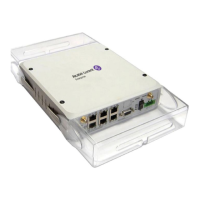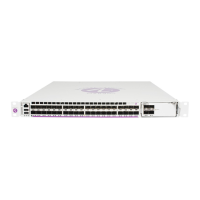Services Overview
7705 SAR OS Services Guide Page 53
When using GRE, the service MTU might have to be set to a value smaller than 2102 octets.
For more information on MTU, see MTU Settings on page 186.
At the network egress of the 7705 SAR, the source address of the IP header is always set to
the system IP address. The destination IP address is set to the system IP address of the
service router on which the GRE SDP is configured. Using the system IP addresses to bring
up the GRE session ensures that any IP link between the two routers can be used to transport
GRE/IP packets. It might therefore be necessary to use static IP address configuration over
DSL networks to ensure connectivity between the routers (especially if the DSL modem is in
bridge mode).
IP Encapsulation
IP encapsulation is added to the SAR in response to a growing demand for more
pseudowire-based solutions in mobile backhaul. IP encapsulation is similar to GRE
encapsulation but allows pseudowires to be transported natively over IP packets. Only static
pseudowires are supported for IP SDPs, because there is no label path to define except for
the endpoints. The path is an IP routed path.
In Release 3.0, transport of pseudowires over IP tunnels is introduced. IP tunnels can be
transported over Ethernet ports, VLAN interfaces in network mode, or over PPP or MLPPP
network links. However, the typical application is expected to use Apipes over IP over
Ethernet, as shown in Figure 7.
Payload Packet
A typical payload encapsulation format for pseudowires over IP is shown in Figure 7 and
described in Table 7.
Figure 7: IP Example of Pseudowire Payload Packet over Ethernet
20695
ATM Cell #1
ATM Cell #N
CW (optional)
PW Header
IP
Eth

